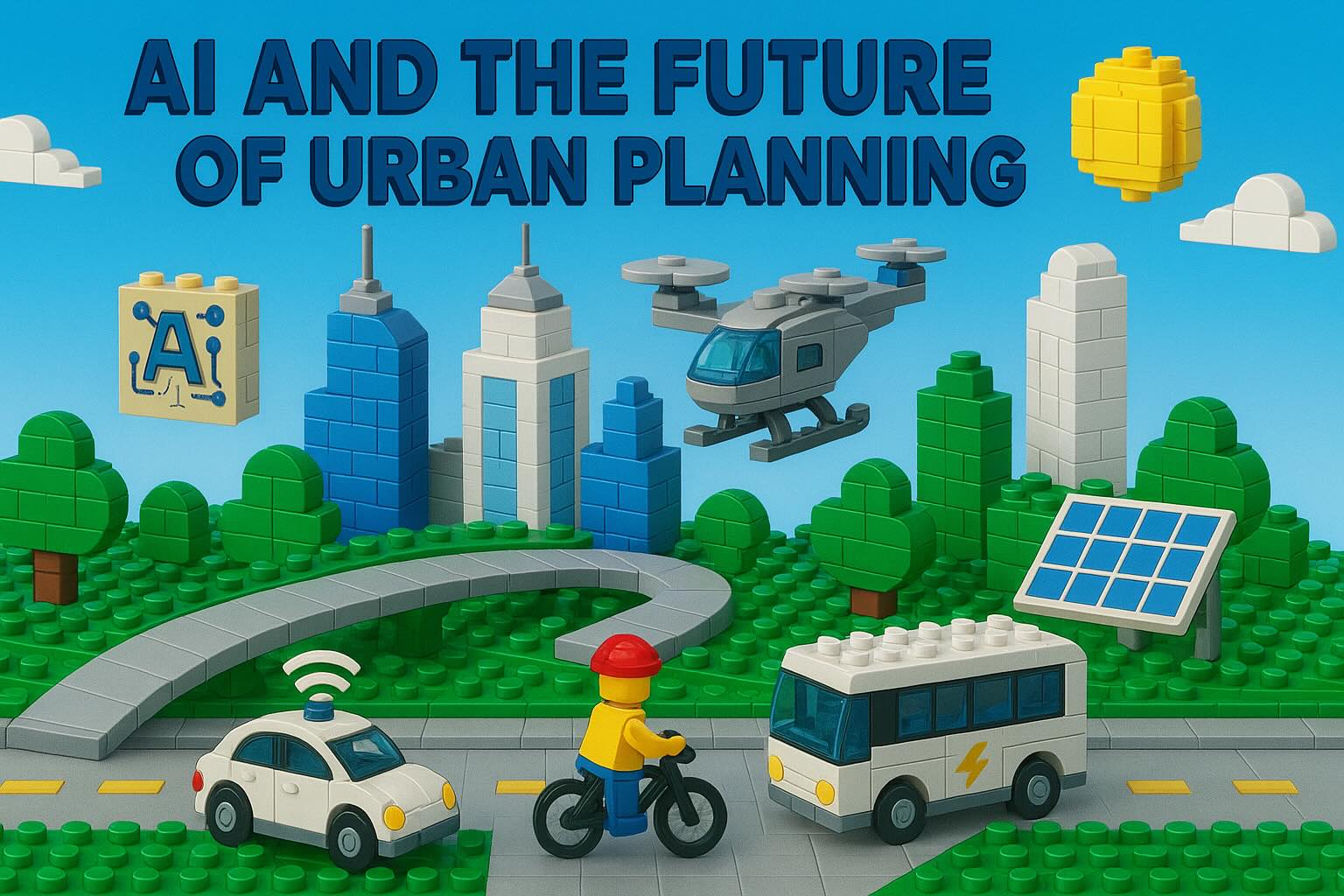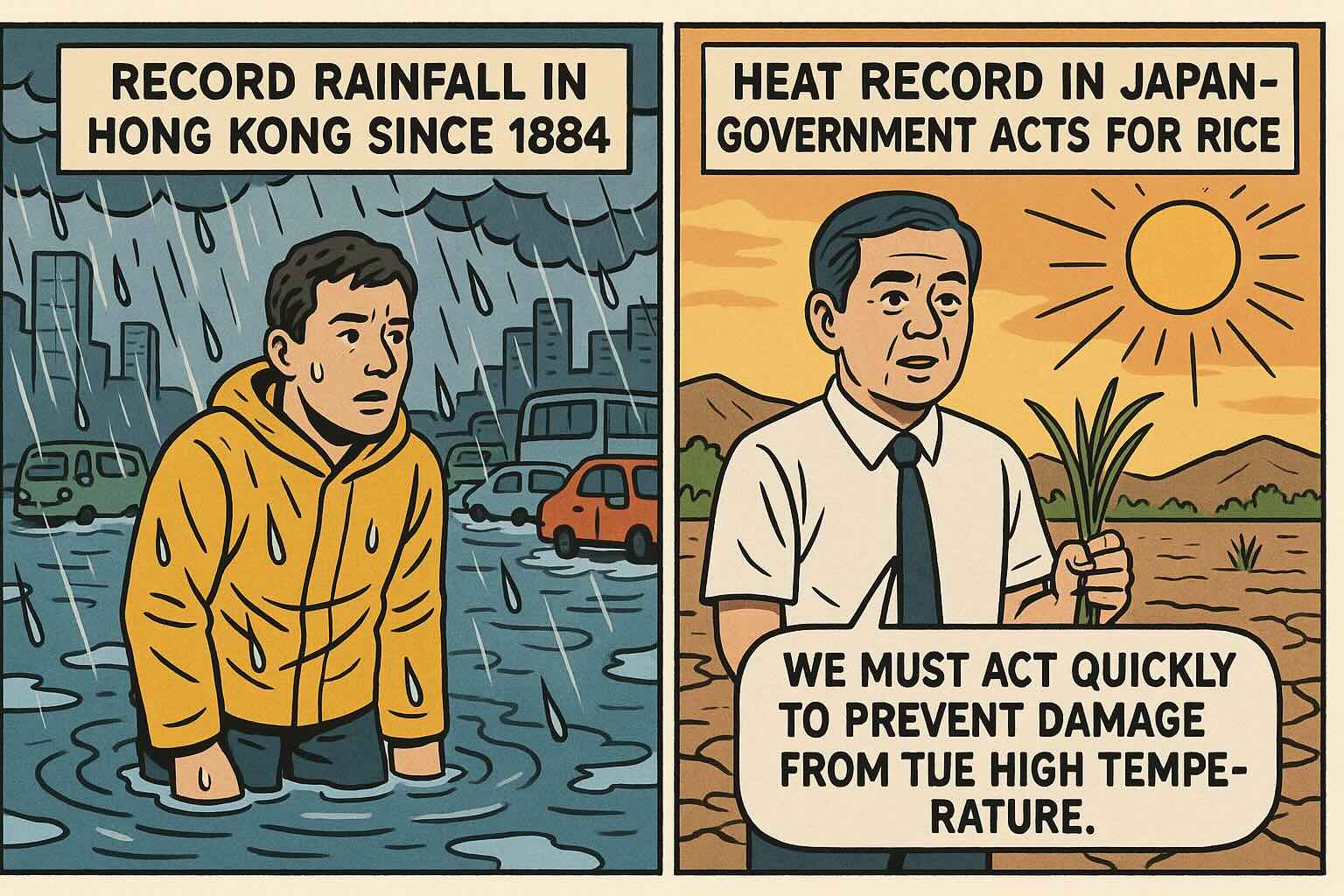
How AI Will Shape the Cities of the Future: Smarter, Greener, and More Livable Urban Planning
Introduction
Cities around the world face growing challenges: traffic congestion, pollution, climate change, and surging energy demand. But while urban problems increase, so do the tools we can use to address them. One of the most powerful tools emerging is Artificial Intelligence (AI) technology that can learn from data and make smart, fast decisions. In the context of urban planning, AI is set to become a transformative force, helping create cities that are not only more efficient but also more liveable and sustainable.
This article explores how AI is already making a difference and what the future might hold by focusing on three key areas: traffic and mobility, sustainability and climate, and energy optimisation. The examples are global, and the tone is visionary, aimed at showing the general public how AI could make future cities work better for everyone.
Traffic and Mobility: AI-Powered Flow and Safety
One of the most visible problems in urban life is traffic. Crowded roads, long commutes, and unpredictable delays affect millions every day. AI has the potential to dramatically improve how people and goods move around cities.
Using real-time traffic data, AI can predict congestion and reroute traffic flows before a jam forms. AI-powered traffic lights can adjust their signals dynamically based on actual traffic conditions, reducing wait times and emissions. Cities like Pittsburgh have piloted such systems, showing up to 25% reductions in travel time and emissions.
Key applications:
Intelligent traffic signals that adapt to congestion, weather, and local events.
Smart route planning for buses and trains that respond to commuter demand.
Autonomous vehicles and robo-taxis that use AI to operate safely and efficiently, already being tested in cities like San Francisco.
Parking AI that guides drivers directly to empty spots, reducing unnecessary circling.
Vision for the future: In tomorrow's smart cities, traffic operates like a well conducted orchestra. Vehicles, public transport, bikes, and even drones coordinate in real time. AI prevents traffic jams before they form, self driving shuttles adjust to people’s needs, and flying electric taxis make short trips across town in minutes instead of hours.
Sustainability and Climate: Cities That Breathe
Urban areas generate over 70% of the world’s CO₂ emissions. They also suffer the most from air pollution, heatwaves, and rising sea levels. AI can become the city’s environmental guardian monitoring conditions, suggesting improvements, and helping cities adapt to climate change.
Real-world examples:
In Beijing, AI was used to predict smog events and adjust traffic and industry operations, reducing hazardous particle levels by 20% in under a year.
Smart waste and water systems use AI to optimise collection and detect leaks.
Digital twins virtual models of entire cities simulate climate impacts and test protective measures like flood defences or heat-resilient park layouts.
In architecture, AI helps designers create energy-efficient buildings that use sunlight, ventilation and greenery more effectively.
Vision for the future: Imagine an AI monitoring the city’s health like a doctor checks vital signs. It detects air quality problems early and responds by reducing vehicle flow, switching traffic routes, or activating air purifiers. It advises city planners on where to plant trees, build shade structures, or install green roofs. Thanks to AI, future cities will not only emit less carbon they will be better prepared for extreme weather and offer a cleaner, healthier environment.
Energy Optimisation: Smarter Use of Every Kilowatt
Cities are energy giants. They need enormous amounts of electricity to power homes, businesses, transportation, and infrastructure. AI is helping make that energy usage smarter, cleaner, and more efficient.
Real-world applications:
Smart grids that use AI to predict demand, balance supply, and integrate renewables like solar and wind. Google used AI to improve wind energy forecasts 36 hours in advance, making wind power 20% more valuable.
Smart buildings that automatically adjust lighting, heating, and cooling based on occupancy and weather, reducing energy waste. Google also used AI in data centres, cutting cooling energy by up to 40%.
Energy storage management that uses AI to decide when to store or release power, especially important for renewables.
Grid maintenance using AI to detect early signs of equipment failure and prevent blackouts.
Vision for the future: Every device, building, and car in a city could become part of a vast energy ecosystem. Your electric car charges when green energy is most available, or even supplies power back to the grid during peak demand. Solar panels on rooftops work in tandem with neighbourhood batteries, all coordinated by AI. You never notice but the city runs more efficiently, with cleaner energy and lower bills.
Conclusion: Human Centred Cities, Powered by AI
AI will not replace human decision making in city planning but it will empower better decisions. By analysing massive amounts of data faster than any human could, AI can help us design cities that are cleaner, more efficient, and more resilient. Whether it’s making your commute easier, improving the air you breathe, or lowering your energy bills, the impact of AI will be deeply felt.
As we build the cities of tomorrow, we must ensure that AI works in service of human needs transparent, ethical, and inclusive. The goal is not just smarter cities, but better cities: places that are more liveable, equitable, and responsive to the needs of both people and the planet.
Welcome to the future of urban planning intelligent, green, and human-focused.
Sources:
World Economic Forum – Reports on smart city innovation and mobility
RST Software – Case studies on AI-powered traffic signal systems
Google DeepMind – Reports on AI for data centre and wind energy efficiency
Beijing Environmental Bureau – Data on AI-aided pollution reduction
MIT Technology Review – Analysis of digital twins and urban simulations
SmartCitiesWorld – Applications of AI in waste, water, and urban planning
CityLab & Bloomberg – Reports on autonomous vehicles and smart mobility pilots
European Commission – Urban energy and smart grid integration studies
Author
Sammy Salmela is a contributor to BestCityIndex with expertise in urban development and global city trends.
Stay updated with our latest insights and city rankings.

Introduction:The aroma of aged wheels, bubbling fondue, and freshly baked bread for cheese lovers, Europe is a true paradise. Here are five cities where cheese...

Date: 5 August 2025Source: AFP, Reuters, Local Weather AuthoritiesReading Time: 3 minutesIntroductionIn just one week, Asia has faced two stark climate...

Moving to Europe: Pros and Cons by Country for Work, Retirement, Education & Lifestyle Part 1.Moving from the United States to Europe is an exciting...



